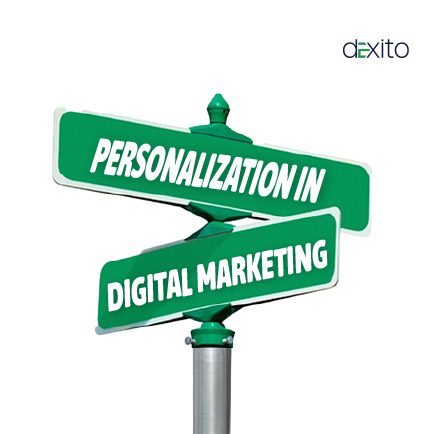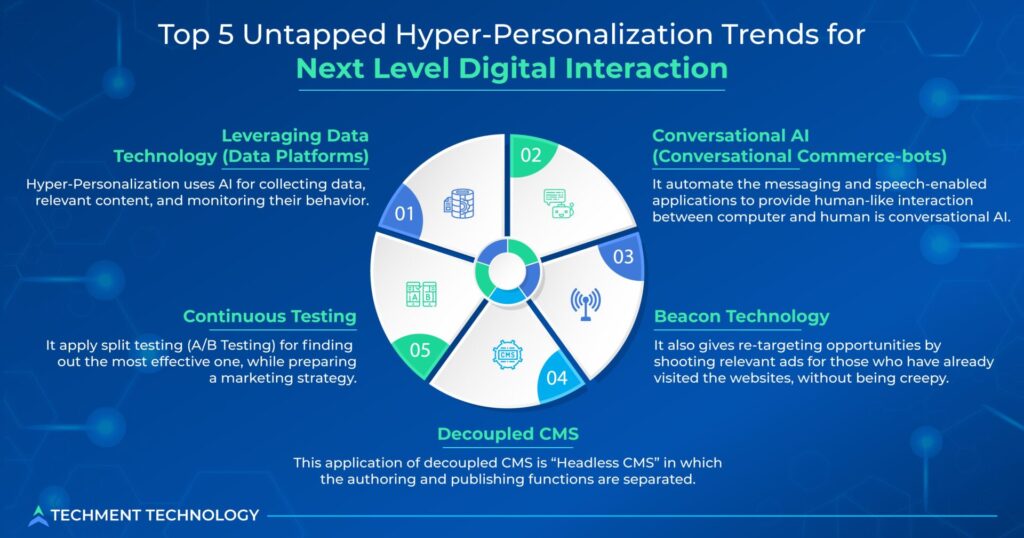Hyper-Personalisation in Digital Marketing: How AI is Reshaping Customer Journeys

In 2024, over 71% of consumers expect companies to deliver personalized interactions, and 76% get frustrated when that doesn’t happen.
It says something about the changing buyers’ behaviour.
It also acts as a warning sign that digital marketing isn’t just about reach anymore, it’s about relevance at every touchpoint.
For brands operating online, this shift has made personalization in digital marketing the core of how customer journeys are managed.
Netflix customizes the watchlist for every viewer, and Amazon tweaks homepage banners – personalization is now embedded into every step of the user experience.
A Digital Marketing Agency in Kerala that understands this shift can help brands implement personalization strategies that truly connect with customers.
Image Source:netflix.com
Keeping a customer engaged from awareness to conversion and all the way to loyalty requires more than just using a first name in an email. CX managers today are under huge pressure to deliver personalization that feels human, timely, and specific.
And that’s where hyper-personalization, powered by AI, is starting to redefine the rules.
Personalization in Digital Marketing: Devising Strategy for a Customer Segment
Personalization has always been at the core of marketing, and didn’t exactly start with AI. But AI solved a big problem that is how to tailor marketing for a large and diverse audience set without creating every message from scratch.
The quick answer is segmentation – a way to group similar customers and serve them campaigns that feel relevant enough.
But is this enough?
Let’s talk about how we can scale your brand together
Whatever your need may be whether it’s SEO, Performance Marketing, Website Design, Branding, Communication Strategy, or a full-fledged digital campaign our marketing agency has the perfect solution tailored for you.
Contact UsHow Brands First Approached Personalization
Before AI-driven insights became widely accessible, personalization in digital marketing largely meant segmentation. Brands grouped customers into broad buckets based on attributes like age, gender, income, or geography, and designed their messaging strategy accordingly.
This worked well enough for broad targeting. A skincare brand, for example, might create separate campaigns for teenagers (acne-focused), adults (hydration-focused), and seniors (anti-ageing products).
These segments were often powered by CRM or web form data, and decisions were based on marketing personas developed from averages, not individuals.
Here’s an example of what segmentation-based personalization looks like:-
| Segment Type | Data Source | Example Campaign |
| Age Group | Sign-up form/purchase data | Anti-ageing product email for 45+ users |
| Location | IP tracking/shipping info | Geo-specific offer for users in New York |
| Gender | Account preferences | Product line split for men vs. women |
| Profession | Onboarding survey | Email sequence for “working professionals” |
This method allowed for targeted communication at scale, and it saw early success: segmented email campaigns delivered 14.31% higher open rates than non-segmented ones.
Also Read: How to Build Successful Digital Marketing Strategies for Startups in Kerala
What is The Role of Marketing Automation Platforms in Personalization?
To operationalize these campaigns, brands turned to tools like Mailchimp, Klaviyo, and Salesforce Marketing Cloud. These platforms enable Marketing Automation by allowing brands to set up workflows including welcome emails, cart reminders, and re-engagement campaigns based on rules and time delays.
It was a leap forward in efficiency. Messages could now be triggered automatically based on customer behavior.
Abandoned cart? Send a reminder.
Purchased once? Add to post-purchase journey.
These automations increased conversion rates and reduced manual follow-ups.
However, this stage of personalization still treated users as segments. It responded to actions, but not necessarily context. Everyone in a segment received the same message regardless of whether they were ready to buy, just browsing, or comparison shopping.
Why Segment-Based Personalization No Longer Feels Personal
Over time, customers became more aware of these patterns. Receiving an email that says, “We thought you might like this,” based solely on a category view from two weeks ago, felt scripted, and often irrelevant.
This model failed to reflect the nuance of real-time user behavior, device preferences, or multi-channel interactions. For CX managers, the gap was clear: segmentation could create relevance, but not resonance.
What’s missing in these campaigns is the ability to personalize dynamically, based on how each customer behaves moment to moment. And, that’s exactly the literal definition of hyper-personalization.
Also Read: How to Write an Article: A Step-by-Step Guide with Article Writing Format and Examples
Hyper-Personalization: Integrating Insights with AI
If segmentation gave marketers a basic map, hyper-personalization is the real-time GPS. It reads their behaviors, intentions, and interactions as they happen, and responds accordingly.

Top 5 Untapped Hyper-personalization Trends for Next Level Digital Interaction-Image Source: Techment Technology
What Hyper-Personalization Actually Means
At its core, hyper-personalization is the use of AI and advanced data analytics to tailor content, product recommendations, and messaging at an individual level. It’s not just “Hello, John” in the subject line. It’s about recognizing that John visited your website on mobile, browsed three products but didn’t add to cart. He typically opens emails between 6–8 PM. This level of insight-driven engagement is shaping the Future of Digital Marketing, where every interaction is personalized, predictive, and precisely timed to meet user intent.
Hyperpersonalization is tailoring both content and timing to match that pattern.
This is a leap beyond traditional personalization in digital marketing, where the message is based on predefined rules. Here, the system learns and adapts on its own.
From Raw Data to Insight: What Powers Hyper-Personalization
To move from segmented to truly individualized experiences, brands need to combine structured and unstructured dat, including:
- Demographics (age, location, gender)
- Behavioral data (site navigation, click paths, time spent)
- Transaction history (past purchases, cart value, reorder rate)
- Device and channel preferences (mobile vs. desktop, app vs. web)
- Social media engagement
- Customer support interactions
But what transforms this into usable insight is AI; specifically, machine learning models. These models analyze this data in real time, identify patterns, and predict what the user is most likely to want next.
A good example of hyperpersonalization is Spotify’s “Made For You” experience. Spotify doesn’t just recommend music by genre or popularity; it analyzes listening habits, skips, time of day, even device usage to curate custom playlists. “Discover Weekly” and “Made For You” are perfect examples of hyper-personalization in action.
This strategy has had a tangible business impact: Spotify’s personalized playlists are responsible for over 30% of all user listening time, and they’ve dramatically increased user retention.
Messaging That Changes With the User
Hyper-personalized communication doesn’t stop at product recommendations. It can guide timing, tone, and channel choice. A user browsing luxury products may respond better to a more formal tone, while a first-time shopper might benefit from helpful explainer content.
AI enables brands to select not just what message to send, but also how and where. This is where omnichannel messaging becomes essential. If a customer browses on mobile, abandons a cart, and then engages with your brand’s Instagram Stories, an orchestrated follow-up via push notification or WhatsApp may be more effective than a generic email.
Hyper-personalization + omnichannel coordination = true relevance, in real time.
Why It Matters to CX Managers
CX managers are in the business of managing customer expectations. And those expectations now include timely, intelligent, and individualized experiences.
With hyper-personalization, CX teams can:
- Pre-empt questions with proactive content
- Route users to their preferred channel
- Adapt onboarding flows based on behavior
- Increase retention by recognizing churn signals early
Conclusion: Where Personalization Meets Performance
Personalization in digital marketing has evolved from basic segmentation to AI-powered individualization. What started as a way to improve campaign relevance has now become a core driver of customer experience and retention.
Hyper-personalization takes this further using real-time data and machine learning to adapt messages, timing, and channels for each user.
Customers expect interactions that are as dynamic as their behavior, and brands that fall back on static journeys risk losing attention quickly.
One last thing – if you’re a CX leader, you have to combine behavioral insights with intelligent omnichannel messaging. This ensures that no matter how or where the customer engages, the experience feels consistent, relevant, and timely
dExito Branding is an ROI-focused Performance Marketing Agency in Kerala offering result-driven digital marketing solutions to help businesses grow online. We are also an expert SEO Company in Kerala, providing strategic SEO services to boost your brand visibility and search engine rankings.

Salmanul Faris, Founder of dExito Branding, is a seasoned Performance Marketing Expert with over 8 years of experience in Google Ads and Meta Ads. He specializes in helping businesses across India and the GCC achieve measurable growth through data-driven marketing strategies. Amidst his dynamic role at dExito, he shares insights on the latest trends in digital marketing and performance marketing, helping brands stay ahead in the competitive digital landscape